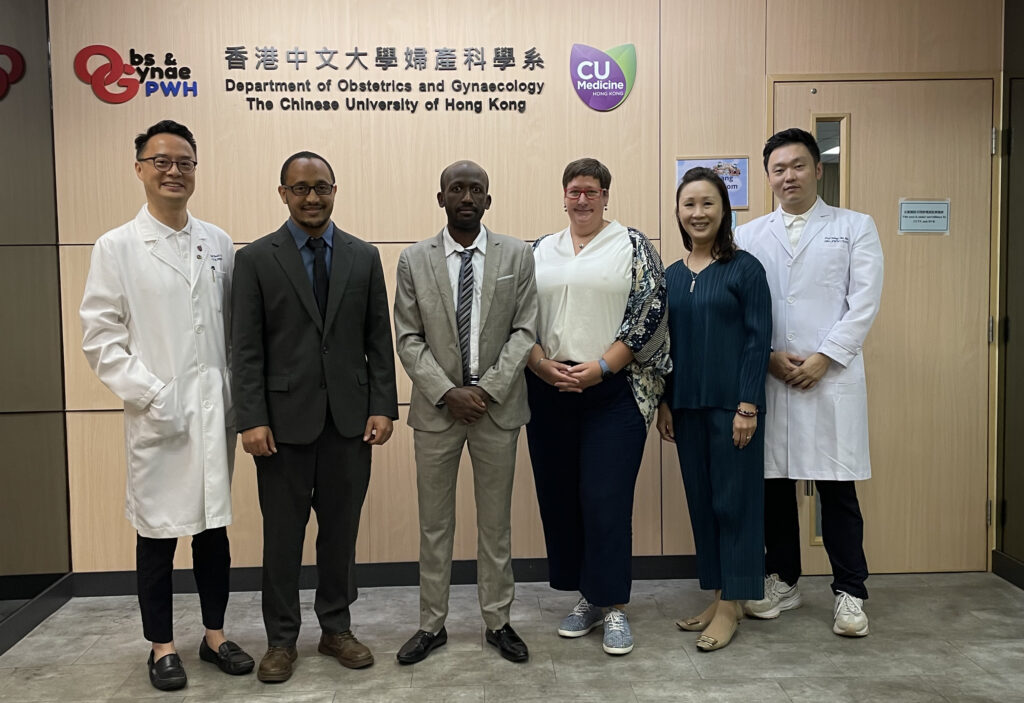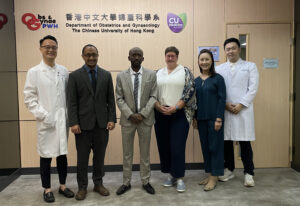CUHK
News Centre
CUHK study finds clues why aspirin fails to prevent
preeclampsia in some high-risk pregnancies
Low-dose aspirin is an effective intervention for pregnant women at high risk of developing preterm preeclampsia, but not all are responsive to the preventive measure. A study by The Chinese University of Hong Kong (CUHK)’s Faculty of Medicine (CU Medicine) found that an aspirin metabolising enzyme named GLYAT in the placenta is the key factor in aspirin treatment failure in this group of pregnant women. The findings revealed that, for the first time, the placenta is the only tissue that is important for aspirin metabolism and has a distinct role in the prevention of preeclampsia by aspirin. The findings have been published in the international journal Circulation Research.
Low-dose aspirin lowers risk of preterm preeclampsia for high-risk group
Preeclampsia is a serious condition that can lead to many maternal and perinatal complications. The condition typically occurs during mid- to late pregnancy or the postpartum period. It is one of the leading causes of maternal and perinatal morbidity and mortality globally, affecting approximately 2-8% of pregnant women worldwide. The incidence in Hong Kong is about 2%. CU Medicine’s previous study published in Circulation showed that early low-dose aspirin was effective in lowering the risk of complications for pregnant women at high risk of developing preterm preeclampsia by 41%. However, about 60% of them still develop preeclampsia despite the prophylactic aspirin treatment based on Asian data.
Professor Liona Poon Chiu-yee, Chairperson of the Department of Obstetrics and Gynaecology at CU Medicine, said: “Compliance with aspirin intake has been commonly cited as a potential factor contributing to aspirin non-responsiveness in the context of preeclampsia prevention. Riding on last year’s study published in Circulation, we investigated whether the assumption is valid or if there are other possibilities, we conducted this study to look into the potential genetic, pharmacokinetic, pharmacodynamic and molecular factors.”
Enzyme GLYAT in the placenta that turns aspirin inactive is the key to aspirin non-responsiveness in pregnant women who develop preeclampsia
The Department of Obstetrics and Gynaecology at CU Medicine analysed maternal genetic variants and aspirin metabolism rates in maternal plasma and placental tissue within a study cohort with high aspirin compliance and no differences in dosage, formulation type and gestational age of aspirin initiation and timing of daily intake.
The results showed that neither maternal genetic variants nor rate of aspirin hydrolysis in maternal plasma and placenta was associated with aspirin non-responsiveness in pregnant women who developed preeclampsia despite intervention. But the researchers discovered that the group of pregnant women who were non-responsive to aspirin intervention had a significantly high level of GLYAT expression in their placental tissues. GLYAT is a key aspirin metabolising enzyme that converts active drug aspirin into inactive aspirin metabolites in the trophoblastic cells in the placenta.
Professor Ronald Wang Chi-chiu, Division Head in the Department of Obstetrics and Gynaecology at CU Medicine and research leader of the study, said: “High GLYAT expression in the placenta implies a high conversion rate of active aspirin to inactive aspirin metabolites, meaning the pharmaceutical effects of aspirin will be limited, leading to fewer preeclampsia preventive effects and worse therapeutic outcomes. In this study, we have identified the key reason why some women whose pregnancies are at high risk of preterm preeclampsia fail to respond to prophylactic aspirin treatment. Placental GLYAT is potentially measurable by some technologies, such as circulating cell-free RNA in maternal blood. In addition, targeting GLYAT could be a novel method to improve aspirin responsiveness and avoid non-responsiveness, lowering the rates of preeclampsia and its complications in high-risk pregnancies.”





